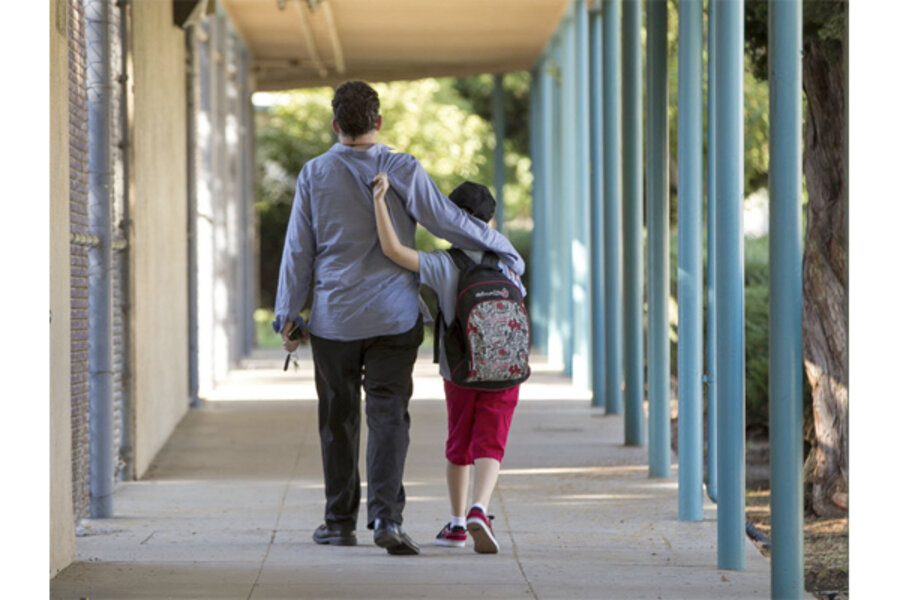Special needs students stay in traditional public schools as others leave
Loading...
LOS ANGELES (AP) — The high cost of educating students with special needs is disproportionately falling on traditional public schools as other students increasingly opt for alternatives that aren't always readily open to those requiring special education.
The issue is particularly acute in districts where enrollment has declined due to demographic changes such as low birth rates and population shifts combined with an influx of charter schools and voucher programs that have siphoned off students.
School district officials say all schools that receive public funds should share the cost of special education.
"It raises an ethical responsibility question," said Eric Gordon, chief executive officer of Cleveland Metropolitan School District. "We welcome our students with special needs, but the most expensive programming is on public districts."
In Cleveland, the district has lost 41 percent of its students since 1996 while its proportion of students with special needs rose from 13.4 percent to 22.9 percent last year. In Milwaukee, enrollment has dropped by nearly 19 percent over the past decade, but the percentage of students with disabilities has risen from 15.8 percent in 2002 to 19.7 percent in 2012.
Los Angeles, the nation's second largest system with 665,000 students, has seen enrollment slide by 8.5 percent since 2005-06, while its special needs population has increased from 11 percent to 13 percent.
The U.S. Department of Education's office of civil rights is investigating charter school practices relating to students with disabilities in five districts around the country, said Russlyn Ali, assistant secretary of civil rights. The probes, which look at admissions, curriculum and accommodation of needs, are the first of their kind, said Ali, who would not release the names of the districts.
While the number of students with special needs has not increased, the rising proportion has driven up costs for cash-strapped schools. Special education, which requires speech pathologists, psychologists and trained teachers, and sometimes special facilities and equipment, can cost four times more than general education. Federal funds only cover a fraction of the extra expense.
Public Schools of Philadelphia, for example, spent $9,100 per regular education pupil in 2009, $14,560 per pupil with milder disabilities and $39,130 for more severe disabilities, according to a consultant's report that compared special education costs. Other districts cited report similar numbers: Los Angeles Unified spent $6,900 to school a regular education student, $15,180 for a pupil with milder disabilities and $25,530 for a child with significant needs.
With budget shortfalls creating staffing crunches and federal law requiring putting children with disabilities in regular classrooms when possible to remove the stigma and encourage diversity, general education teachers now may find a number of pupils with special needs in their classes.
"There used to be one or two. You'd sit them at the front of the class, but now there are 10 or 12," said Barbara Schulman, an Orange County special education teacher who heads the California Teachers Association's special education committee. "Teachers need to know what they're doing."
Most charter, parochial and magnet schools serve children with disabilities, but they are often milder disabilities, leaving the brunt of students with significant needs in traditional district schools.
Special needs enrollment in Philadelphia district schools and charters is roughly 14 percent, but about half the district's pupils with special needs have severe disabilities compared to about a third for charters.
Charter proponents say schools do not turn away kids with disabilities or ask if an applicant has disabilities, which is illegal, and note that in six states — Nevada, Wyoming, Iowa, Ohio, Virginia and Pennsylvania — charters serve more pupils with special needs than local districts.
As districts increasingly offer other options, kids with disabilities are not enrolling in the alternatives at the same rate. Some parents may feel their child is better served with a traditional public school, said Ursula Wright, interim president and chief executive of the National Alliance of Public Charter Schools.
"Charter schools give all parents opportunities for choices. Sometimes the choice is not to select a charter school," she said.
Some charters, such as Partnership to Uplift Communities, have made serving special needs their mission. The Los Angeles charter organization has special needs enrollment ranging from 9 percent to 17 percent at its 13 schools.
Many charters have been reluctant to tackle special education because they lack expertise, but that is starting to change, said Kaye Ragland, who heads special education for the Partnership.
Districts have started to reach out to charters to collaborate more on special education. Some, like Los Angeles Unified, are training charter teachers. Denver Public Schools has gone further.
Two years ago, the district requested that charter operators agree to a mission of equity in schools and included clauses in charter contracts stipulating that they must install programs for severe special needs if required.
Aided by district-provided training and funding, several charter operators now host centers specializing in autism, emotional disturbance and cognitive delay, serving 15 percent of the district's students with significant needs. More centers are in the works, said John Simmons, executive director of student services for Denver schools.
"We want to realize this idea of equity between traditional district schools and non-traditional schools. It's about looking at schools on a level playing field," he said.
Parents like Matthew Asner, whose 9-year-old son with autism attends a traditional Los Angeles Unified school, hope the issue gets figured it out soon. He'd like the fourth-grader to go to charter middle and high schools, but knows it's a challenge to find one that accommodates autistic students and has openings.
"I don't think we've got a good handle on this," said Asner, who is executive director of Autism Speaks, an advocacy organization. "We don't want to see this kind of exclusion."







